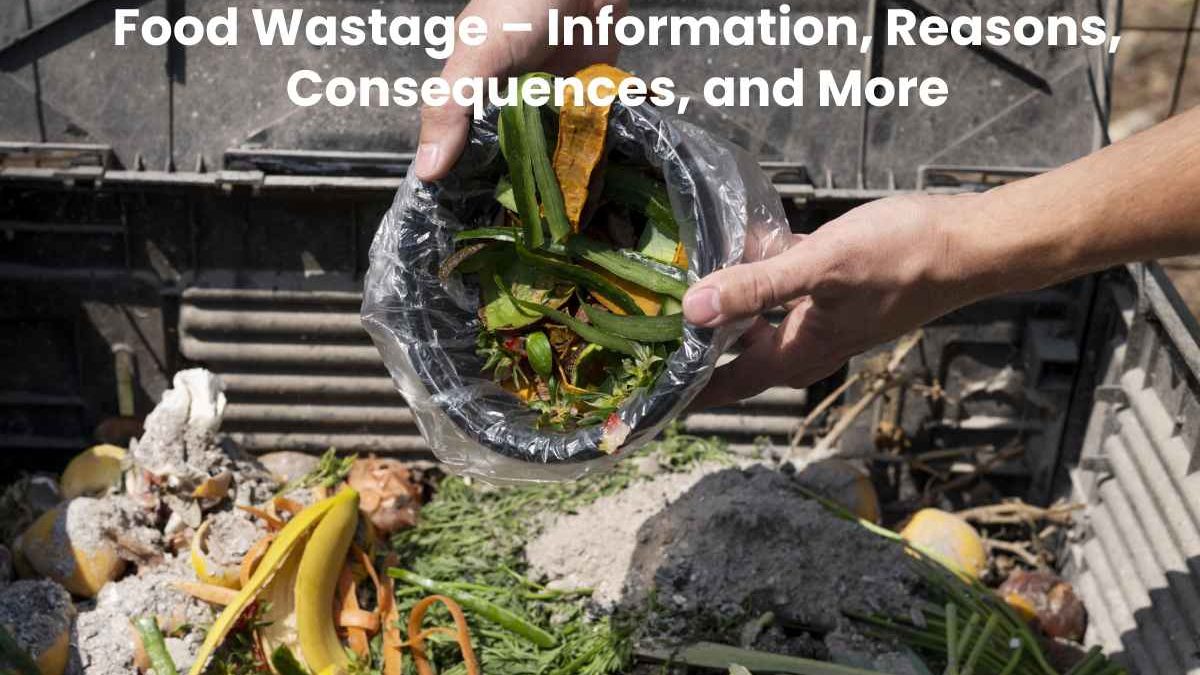Table of Contents
What is Food Wastage?
Food wastage is associated with the reduction in successive stages of the food chain destined for human consumption. The decline may be unintentional or intentional but eventually results in less food for everyone. It may be payable to difficulties in reaping, storage, packaging, transportation, infrastructure or market mechanisms or valuing, and institutional and legal frameworks.
When food is fit for human consumption but because retailers or consumers throw it away, it is said to be food waste. Maybe due to rigid or misunderstood expiration date labelling regulations or improper storage, purchasing, or preparation practices. For example, harvested bananas that drop off a truck measure food waste. Food waste has its price
Ethical Issue
A person arrives at the supermarket and fills their shopping cart with various groceries and products. He certainly does so without giving too much thought to how they got there, how they produce, packaged, transported, and sold. Food wastage is damaging the environment, water, land, and biodiversity. It probably won’t think about those it has already lost or will waste, let alone the environmental, social, and economic consequences. It is a query of ethics, education, and consumption designs.
GHG Emissions (greenhouse gases)
Food waste accounts for 8% of worldwide greenhouse gas emissions. For example, grain waste is a significant problem in Asia, with enormous effects on CO2 emissions, water use, and cultivation. The case of rice is particularly notable for its high methane emissions associates with high waste production.
Although meat waste is relatively low globally, the meat sector has significant environmental impacts on land use and carbon footprint, especially in high-income and developing countries in Latin America, which accounts for 80% of total meat waste.
Similarly, the large amounts of green waste in developed countries in Asia, Europe, and South and Southeast Asia generate a significant carbon footprint for this sector.
Unsustainable Agriculture
Account for about 25% of anthropogenic GHG emissions, mainly in livestock methane and fertilization. When applied to previously degraded soils, these soil tillage methods lead to higher agricultural yields, thus increasing food production.
Fruits and meat are the products that contribute most to water loss through food waste. Animal products have a higher water content per ton of product than plants. As we read on the Fundación Aquae website, in Spain, we waste 169 kilograms per capita per year, which means almost a quarter of all the water we use to grow food that no one eats. If the water trace is 2,529 litres, can you imagine Our kitchen bucket certainly can’t store so much wasted water capacity?
Economic Problem – Food Wastage
The total cost of food loss and waste is US$1 billion, of which about US$700 billion is environmental cost and about US$900 billion in social expenditure. Avoidable food losses directly negatively impact farmer and consumer incomes on an economic level.
Fight Climate Change While Avoiding Food Wastage
It equates to approximately 1.3 billion tons of fruit, vegetables, meat, dairy, seafood, and grains damaged on the farm, lost, damaged during distribution in supermarkets, restaurants, and home kitchens. It is also enough food to feed many of the world’s people suffering from malnutrition.
But food waste is not just a social or humanitarian concern. It is also an environmental issue. When we waste food, we also waste all the energy and water needed to grow, harvest, transport, and package it. And when food ends up in landfills and rots, it produces methane, a greenhouse gas even more potent than carbon dioxide. Food waste accounts for about 8% of all artificial greenhouse gas emissions. In the United States alone, lost or wasted food production causes greenhouse gas emissions equivalent to 43 million cars.
Here are Some Modest Thoughts to get you started:
Buy – What you Need – Plan in Advance
Going to the store without a plan or on an empty stomach can buy more than we need. To keep your kitchen fresh, try to eat the leftovers, consider eating out, and avoid unnecessary purchases by planning your grocery list ahead of time.
Use your Freezer
While eating fresh foods has many benefits, frozen foods can be just as nutritious. They also stay in good condition for much longer. As a result, it only lasts fresh for a few days. Buying frozen seafood allows you to increase the product’s shelf life significantly.
Build with What’s Left
Before buying, use the groceries you already have. You can search for recipes based on ingredients already in your kitchen on sites like Big Oven, Supercook, and MyFridgeFood. You can also use programs like Epicurious and All recipes to take advantage of most things in your fridge and pantry.
Mix, Boil, or Cook
Overripe fruits and vegetables may not look pretty, but that doesn’t mean they aren’t delicious in recipes. Try using crumpled, golden or defective products to make sweet pasta, bread, jam, sauce, or supplies.
Talk About It
Avoiding food waste is the most effective way to reduce the impact of food waste on the planet. By avoiding producing foods we don’t eat, we can save land, water, and energy that would go into their production. Raising awareness is also a good first step
Reasons for Food Wastage
The leading causes of food waste include:
Pre-Harvest Issues – Food Wastage
It is one of the leading causes of food loss. These reasons also include poor storage and improper implementation of transportation, either through negligence or by other factors external to the crop.
Lack of Infrastructure – Food Wastage
We find that the lack of a market or poor packaging and prices do not correspond to the products with the required consumption within this category. Most of these foods purchase and rotting and spoiling.
Lack of Fresh Produce Management – Food Wastage
Many of these foods are discarded before their expiration date while still ideal for consumption. Many ignore not meeting aesthetic criteria such as colour, shape, or size within the chain. It happens in homes as well as in businesses.
Prepare Large Quantities of Food – Food Wastage
Another reason for food waste is that, whether at home or in businesses such as restaurants, excessive amounts of food preparing, and often, by not eating it at the time, it ends up being discarded. Although many people also store leftovers in lunch boxes or Tupperware in the refrigerator for later use, many people throw them away, which also happens in many restaurants.
Consequences of Food Wastage
When it comes to the main consequences of food waste, we can see environmental, social, and health issues.
Environment
One of the first data we find on the consequences of food loss is the amount of water wasted on its production. We are talking about a total of 8,060 m³/s per year. Add the 3,300 million tons of greenhouse gases released into the planet’s atmosphere, plus those resulting from their emission.
Economically
Food waste represents a loss of more than $75,000 million a year on top of this environmental impact. Another critical point is the total management costs generated by hospital waste. It estimates that the average loss from food waste is around €2/kg, not counting labour costs and the time and energy required to prepare daily rations. It would mean total damage of around €10,000/year.
Social
The problem of food waste is much closer to us than we think. More than two million people eat exclusively in soup kitchens in Spain alone. Most are minors who do not have the necessary food for their growth and health after the school year.
Conclusion
Food waste includes all types of food lost during the procurement process between producer and consumer, where it is consumed or discarded by the consumer. This rejection or non-delivery of safe products for human consumption is becoming a severe problem in first-world countries, affecting developing or third-world countries.


